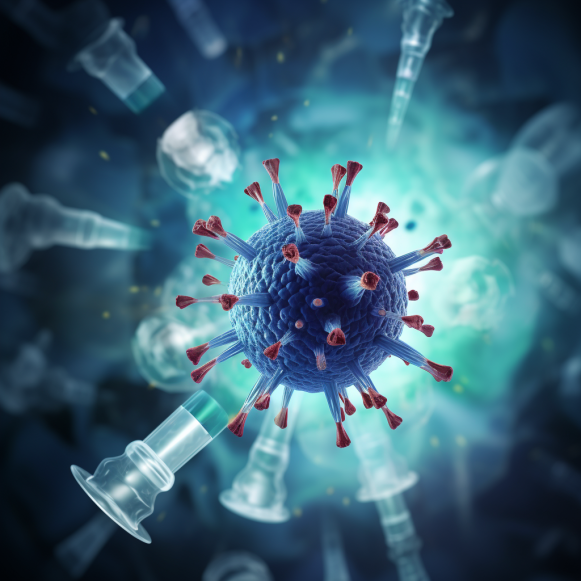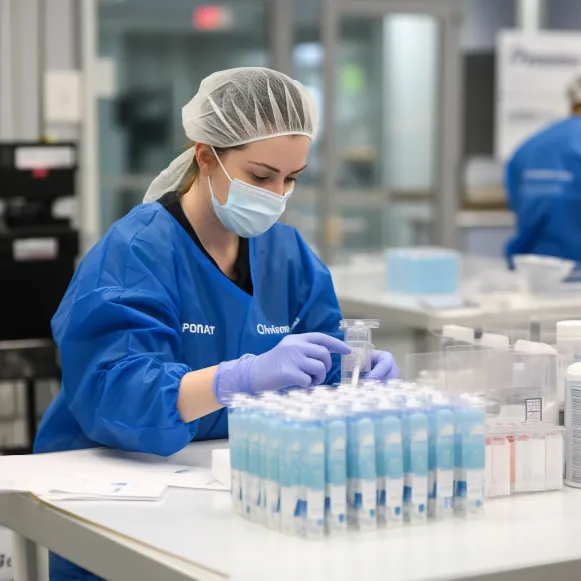Forensic Evidence From the Clotshot
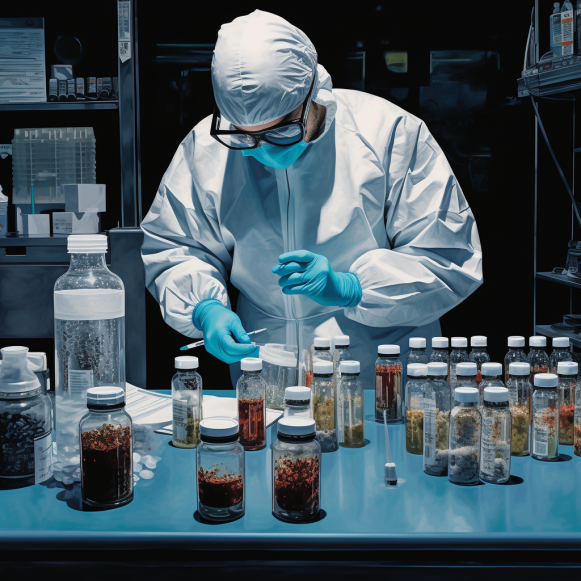
I tested my COVID-jabbed patients for D-dimer. Each lab result came back high, even long after the last jab.
D-dimer is a clotting breakdown product that is a telltale sign of previous clotting activity.
Precautions Against Self-Harm
I’m guessing that the Venn diagram of people who chose to receive COVID vaccines and those who primarily rely on naturopathic medicine has very little overlap.
Those who have experienced negative pharmaceutical side effects on themselves or loved ones are skeptical of conventional medicine. As a result, this growing group prefers to avoid conventional medicine unless absolutely necessary, instead opting for chiropractic, naturopathic, acupuncturist, herbalist, and homeopathic practitioners as primary care providers.
However, a small minority of rarely-consulting pharma-adherents remain in my practice, including both new patients and those I had not seen in years—since before COVID. As a practicing naturopathic physician, there were a total of 12 people in my practice who had decided to submit to COVID vaccination prior to our consultation.
What Became of 12 COVID-Vaccinated People
Unfortunately, a patient I hadn’t seen in a long time died suddenly and unexpectedly 11 days after receiving his one COVID vaccine dose. Two others had been cancer-free for 14 and five years, respectively, after completing our clinic’s treatments. The latter person’s cancer returned a few months after the injection.
Another had never had cancer, but I hadn’t seen him since before COVID, and he’d been bullied into getting two shots, unaware that I write medical exemptions. I found out about those four people’s COVID shots between early and mid-2021. None of the four returned for care after receiving COVID vaccines, nor did they visit a D-dimer lab.
Later, I met with each of the remaining eight patients. I offered three new patients the D-dimer lab as of early 2022, but they declined. From mid-2022 on, there will be five COVID-vaccinated patients. I saw four return patients who I hadn’t seen since before COVID.
I suggested to the four (plus a new patient) that they each get the D-dimer lab so that we could get a sense of the impact of the COVID vaccines and whether any precautions were necessary, and they all agreed to have their blood drawn for this lab.
So the following information comes from those five patients. Notably, fibrinogen, PT/INR, platelets, and troponin levels were all within normal limits. Only D-dimer was out of the question.
Sam, Tim, Ann, Joe, and Jen (all very different from their real names) range in age from the early 1960s to the early 1980s. Each of the five had received at least one COVID vaccine. They are all certain that no COVID vaccine doses were available as late as summer 2022. The majority of the doses were administered in 2021, with the most recent in early 2022. All D-dimer labs were drawn in the fourth quarter of 2022.

But first, a definition of D-Dimer.
D-Dimer is a two-mer protein, hence the name dimer. D stands for dextrorotation or a spiral structure with a right-handed orientation. I requested this lab because D-dimer is a breakdown product of fibrin, and it is useful to know if there has been excessive clotting. The presence of high D-dimer levels indicates that the body has been fighting (somewhat successfully) against one or more clots held together by fibrin threads.
I’ve been asking my COVID-jabbed patients (and, previously, other cardiovascular history patients) if we can draw for this lab because it tells me if we need to keep an extra close eye on blood viscosity, clotting time, clot risk, and/or blood-thinning strategies. (Which all open a new can of worms, because homeostatic anti-coagulation is also going on, and neither excess bleeding nor clotting can be risked. So this is a whole new set of challenges for those who have the “clotshot.”
Now, I recognize that this is a very small retrospective case series. Having said that, it turns out that all but one of my patients who agreed to a D-dimer test have results that are above the normal range. After two COVID vaccine doses, Sam and Tim were roughly triple and quadruple the normal range, respectively. Ann’s results were in the 79th percentile of the more generous lab reference range. All five are significantly above the following Medscape range of 250 ng/mL.
Medscape cites Mosby’s Diagnostic & Laboratory Test Reference, 14th ed. Elsevier, 2019, by KD Pagana, TJ Pagana, et al., in which the D-dimer reference range is 250 ng/mL.
D-Dimer is the source.
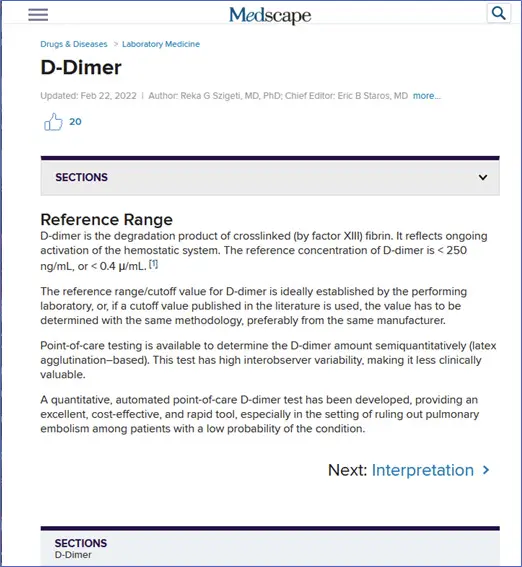
The following is Medscape’s interpretation of D-dimer levels:

Unlike other thrombotic risk markers, high D-dimer levels can indicate a chronic proclivity for active fibrin formation and degradation, i.e., the body’s proclivity to clot excessively, as well as homeostatic resistance to that proclivity, resulting in the (somewhat) successful disintegration of fibrin, aka clot-busting. (Interestingly, all of my COVID-vaccinated patients tested normal for platelets, fibrinogen, PT/INR, and troponin, but all had concerning D-dimer levels. This suggests successful homeostatic normalization, which the most unfortunate “clotshot” victims have yet to achieve.)
Along with lung imaging, D-dimer is frequently used to determine whether a deep vein thrombosis has progressed to a pulmonary embolism. None of my five patients mentioned above had or developed a pulmonary embolism, though Jen did have a minor DVT that has since resolved.
Deep vein thrombosis, pulmonary embolism, acute stroke, aortic dissection or other vascular flow anomalies, traumatic brain injury, and cancer are all associated with elevated D-dimer levels.
D-dimer Reference Levels
D-dimer levels below 500 ng/mL or 250 ng/mL are considered normal in the United States. It turns out to be negatively related to longevity. Di Castelnuovo, de Curtis, et al. reported in 2013 that D-dimer had no significant association with age, sex, smoking, BMI [body mass index], alcohol consumption, hypertension, or diabetes in a four-year study of 17,359 apparently healthy, randomly recruited adults > 35 years old, mean age 55, in southern Italy.
However, high D-dimer concentrations in the blood were independently associated with higher rates of subsequent death from any cause, according to previous smaller studies. D-dimer levels greater than 210 ng/mL were found to increase the risk.
According to Di Castelnuovo, de Curtis, et al., Table 4, deaths from all causes skewed strongly toward the highest quartile of D-dimer results, despite accounting for only 8% of the study population; on the other hand, note the longevity associated with low ( 221) D-dimer:

From: Di Castelnuovo, de Curtis, et al., Association of D-dimer levels with all-cause mortality
Here was the distribution of D-dimer levels, with hazard and C/I for each level.

Di Castelnuovo, de Curtis, and others. The relationship between D-dimer levels and all-cause mortality.
Let us now compare the distribution of D-dimer levels in this Mediterranean adult pre-COVID population to the levels found in our COVID era, COVID vaccinated patients:

The disparity between the healthy adult Italian population in 2013 and the five COVID-vaccinated US patients is stark.
D-dimer levels tend to rise with age. This BMJ article proposed an increasing cut-off of normal D-dimer by decade to account for this known increase while being able to reasonably rule out a pulmonary embolism suspicion. [Note the likely typo on the y-axis, where 950 is marked twice instead of 950 and 850.]
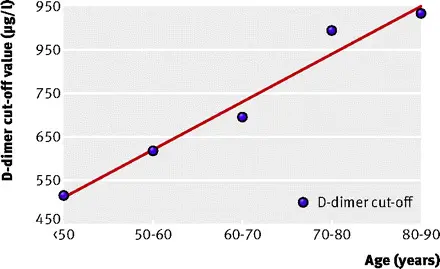
R Douma, G Legal, and others. The possibility of an age-adjusted D-dimer cut-off
Three of my five patients discussed above were still well above the BMJ criteria for their (or any) age group. The average age of participants in the Italian study was 55, whereas the average age of participants in my study was 76.
To account for the significant age difference, I assigned an age-based advantage to each of the five in the latter, subtracting 100 D-dimer points per decade (= 10 points per year) of age above 55, as calculated in the BMJ article. That would result in the age-adjusted table below, which is still significantly different from the Italian data:

Even after adjusting for age, all five of the COVID-vaccinated subjects in the United States are above the Italian study’s optimal D-dimer 221 cutoff. Unlike the BMJ article, the large Italian study found no link between D-dimer levels and age.
D-dimer elevation and COVID vaccination
Vaccine-induced immune thrombotic thrombocytopenia (VITT), characterized by both clotting and low platelets, has been observed since February 2021. Because platelets are required in the clotting cascade, which is a 14-component process to create a barrier to bleeding, aka a clot, the two phenomena have some opposing effects.
Researchers previously discovered significantly elevated D-dimer = 9050 mcg/L FEU = 9050 ng / mL = 18 x the top of the 500 ng / mL cut-off in a patient with both thrombocytopenia and extensive venous thrombosis one week after her COVID booster dose of the Pfizer-Biotech injection in a patient with both thrombocytopenia and extensive venous thrombosis.
Another VITT case presented 10 days after his second Moderna vaccine dose with a D-dimer of 1890 ng/mL and died 12 days later. A D-dimer of 6.8 mg/L = 6800 ng/mL was measured in another VITT patient 20 days after a Moderna booster. Another 76-year-old (previously healthy) VITT patient had D-dimer = 17,400 ng/mL two days after his first Pfizer vaccine. His hospital presentation looked like this:
The American Society of Hematology defines VITT as occurring four to 42 days after receiving the COVID vaccine, with the presence of any venous or arterial thrombosis and thrombocytopenia with platelet count 150 x 109/L and markedly elevated D-dimer (>4 times upper limit of normal). These parameters would have ruled out the 76-year-old unfortunate patient who presented two days after receiving his first Pfizer vaccine, despite meeting other ASH criteria.
The UK government’s Yellow Card system has reported “445 cases of major thromboembolic events (blood clots) with concurrent thrombocytopenia (low platelet counts) in the UK following vaccination with COVID-19 vaccine Astra Zeneca” through Nov. 23, 2022, mostly after the first dose. During that time period, the same system discovered 33 such cases following the Pfizer vaccine and eight cases following the Moderna vaccine.
However, there are some opposing viewpoints, as follows.

This observational study of 567 health care workers found no link between COVID vaccines and elevated D-dimer levels.
This article claims that VITT is “rare” after COVID vaccination, which it may be.
However, each of my COVID-vaccinated patients who agreed to be tested for D-Dimer ranged from the 79th percentile (Ann) to above (way above) normal (Sam, Tim, Joe, and Jen). All five were above the optimal longevity range discovered in 2013 in southern Italy (221). Then I’d have to question the claim that thrombogenic events associated with COVID vaccination are either non-existent or uncommon.
Diseases Linked to Elevated D-dimer
D-dimer can be used to predict cancer risk, among other things. In this study, extremely high D-dimer levels were associated with an increased risk of cancer:
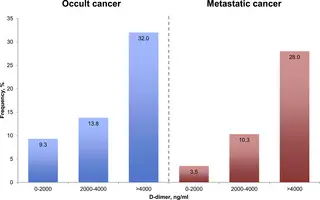
Han, O’Hartaigh, and others. The significance of D-dimer in prediction
I must point out that both forward and reverse causality may be at work in the latter data. That is, cancer may have a pro-coagulant effect, or thrombosis may have a carcinogenic effect, or both. There have also been studies that support both causal directions.
Let’s not get too carried away, folks.
Among those who consulted me during or after COVID, I pretty much warned everyone around me—at least those who sat still long enough to listen—to avoid these vaccines like the plague. Some people I hadn’t seen in years and who now regret their jabs were angry that I didn’t reach out to warn them. I did issue my dire warnings about the COVID vaccines above on February 21, 2021, before most Americans had received the shots, but I did not contact the thousands of patients who have consulted with me over my 16 years of medical practice individually. My response is that I, too, do not stand at the edge of each cliff with a sign saying:
I can’t be everywhere, advising everyone to stop playing Russian roulette or to avoid driving in the fast lane of a highway at night. There are only so many warnings I can issue, and they have a very limited reach. Suffice it to say, before engaging in risky or experimental injections or other questionable practices, let’s consult (either with me or with another contrarian, critical thinking, or independent medical professional).
This is a repost from the author’s Substack.


